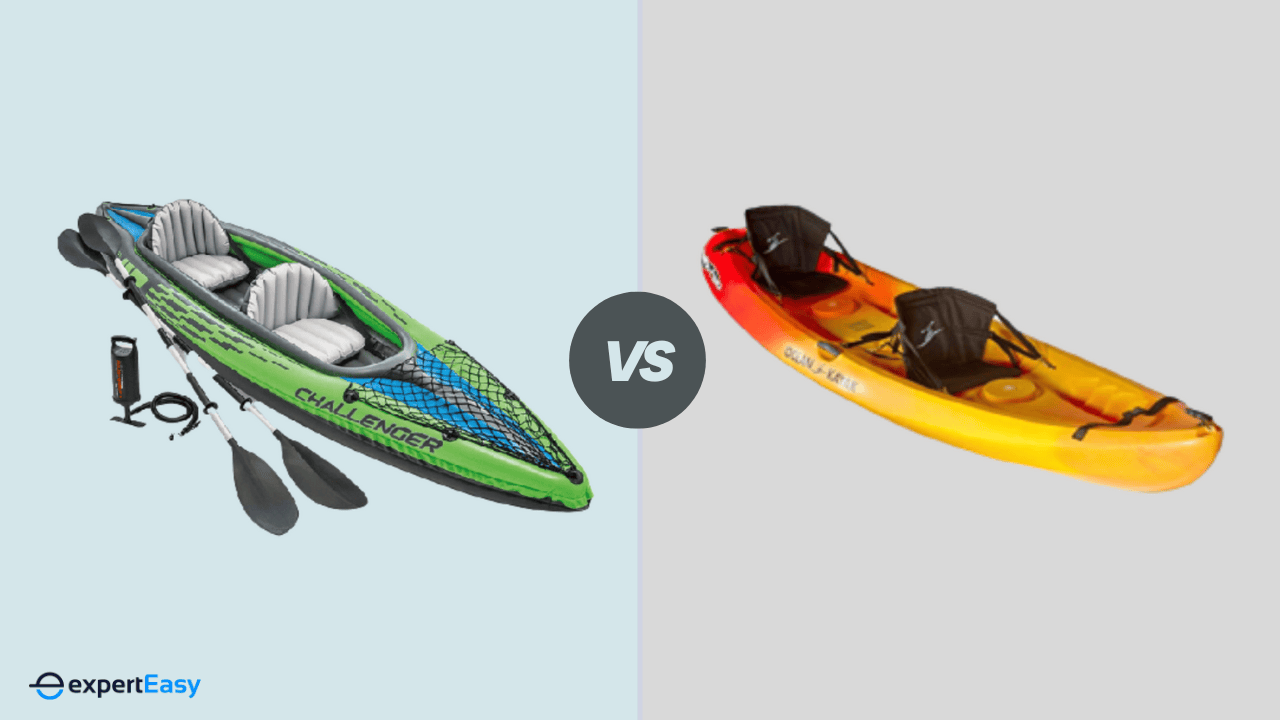A canvas tent proves a stalwart companion for camping trips, offering resilience and longevity. However, it does demand regular upkeep to maintain optimal conditions. The importance of tent cleanliness extends beyond mere aesthetics, helping to stave off mould, unpleasant odours, and insects that could potentially compromise health.
Through a thorough cleaning regimen after each use, you can keep your canvas tent in prime condition for countless adventures ahead. In this article, we’ll unpack the top techniques to clean and care for your canvas tent, as well as how to care for and maintain it to ensure its durability for many more years to come.
Ready? Let's roll up our sleeves and dive right into the nitty-gritty of canvas tent cleaning.
#1 - Preparing for Cleaning
Before we delve into the cleaning process, let's establish a strong groundwork for the preparation stage. This is our first secret to keeping your canvas tent sparkling clean. Keep in mind that a small investment of time and effort in your preparations can ensure an efficient and successful cleaning session.
This involves performing a pre-cleaning inspection of the tent's condition and situating the tent in an appropriate location. Ideally, an outdoor spot with excellent drainage should be chosen to avoid water pooling during the cleaning process, whether you're performing a spot clean or a full wash.
Gather materials
Before starting the cleaning process, gather all necessary materials, such as a soft brush, mild detergent, and a hose or bucket of water. Ensure you only use a cleaner and brush that is suitable for the tent's fabric.
Using too hard a cleaner or brush, all in pursuit of eliminating mould, could inadvertently harm the fabric of the tent. Also, remember to have safety equipment on hand, including gloves, safety glasses, and a mask, to protect yourself from the detergent or any mildew.
Clear the tent
Before cleaning the tent with soap and water, ensure you clear it. While it may seem obvious, it cannot be emphasised enough. Clearing the tent prior to cleaning not only enables a thorough process but also shields your belongings from potential damage. Hence, remove all camping gear and furniture and pitch the tent in a spacious, open area ready for cleaning.
#2 - Cleaning the Canvas
Now, it's time to get down to the actual cleaning. Cleaning a tent, be it a one-person tent for yourself or a family-sized tent, is vital not only for aesthetic purposes but to maintain the longevity and durability of the tent. So, to restore the freshness and beauty of your tent, here are some tips to keep in mind.
First, clean both the inside and outside surfaces. Cleaning all sides of the tent eases the removal of any stubborn stains or dirt. And depending on your tent fabric, you may consider a full soak. Most people opt for spot cleaning as it tends to dry quicker than a full soak.
Secondly, remember to test the cleaning solution on a small, inconspicuous area of the canvas, checking for any negative reaction or discolouration. Below are other tips to guide you in cleaning your canvas tent.
Spot cleaning

Spot cleaning is one of the easiest methods to clean a canvas. Start by performing a quick dry cleaning using a soft bristle brush to remove as much surface debris on the canvas as possible. Next, use a damp cloth to remove any visible dirt or stains on the canvas.
For stubborn stains, use a mild detergent and a soft-bristled brush to scrub the affected area gently. Choose a detergent specifically designed for canvas tents, and avoid using harsh chemicals that can damage the canvas.
While spot cleaning, remember to always clean in a soft, circular motion. This technique helps lift dirt more effectively without damaging the canvas fabric.
Hosing down the tent
After washing the tent with soapy water, rinse all the soap off. Using a hose or bucket of water, gently rinse the entire tent to remove any remaining dirt or soap suds. It's essential to remove all soap residue, as it could encourage the growth of fungi and mould.
Use a gentle, low-pressure spray on the tent, starting from the top and methodically working your way down. Pay special attention to the tent's corners and seams, as these areas often harbour extra dirt and soap residue.
Drying the tent
After rinsing the tent, set it in an open and well-ventilated area, allowing it to air dry completely before storing or using it again. Allowing the canvas to dry completely helps preserve the quality of the fabric, ensuring it stays in excellent condition for future use. Avoid prolonged direct sunlight exposure during this process, which could potentially weaken or fade the fabric.
#3 - Maintaining the Canvas
While cleaning a tent is vital to keeping it in good shape, regular maintenance is equally crucial. Proper care will help preserve your canvas quality and extend its lifespan. So, always inspect the tent for any signs of wear and tear.
If there are any, promptly address the issue. Also, always store the tent in optimal storage conditions when not used. Below are some other canvas tent maintenance practices you can employ to ensure your tent remains in excellent condition and ready for countless outdoor adventures.
How often should I clean my tent?
It's a common misconception that since the canvas material is strong and made to resist moisture, it can survive rough conditions. But while canvas is designed to protect against the outdoor elements, its durability is contingent upon proper care and maintenance.
Dirt and grime are the primary challenges that can weaken the canvas material. A canvas tent should be cleaned and maintained at least once every season or after every few camping trips. But if you camp in a humid or moist environment, you may need to clean and maintain more frequently.
Ensure proper packing and storing
When not in use, store your canvas tent in a cool, dry place and avoid storing it in direct sunlight or damp areas. Pack the tent in its carrying bag or a large plastic container to protect it from dust, dirt, and moisture.
Fold the tent carefully and store it in their carrying bag rather than stuffing it haphazardly. Also, pack the tent along the longer axis to put equal stress on all the tent's seams and fabrics. When you roll the tent, do so tightly to work out air pockets as you go.
Remember to seal the seams

Another crucial maintenance tip for keeping your canvas in good shape is regularly sealing the seams. Over time, the seams on a canvas tent can weaken and allow water to leak. Exposure to elements and repeated use can cause the seams to expand, contract, and loosen. Use a seam sealer to protect the seams and keep the tent waterproof.
Always clean and dry the tent before sealing the seams. Apply the sealer carefully along the seams, focusing particularly on crucial areas like corners, rainfly attachment points, and ground-level seams. Allow the seams to dry before packing the tent away.
To ensure effective sealing, apply seam sealer not just on the outside but also on the interior seams of the tent. This double-layer protection provides enhanced resistance against potential leaks.
#4 - Inspect for Damage
Regularly inspect the tent for any signs of damage, such as holes, tears, or frayed edges. Repair any damages as soon as they are discovered to prevent further deterioration. For minor repairs, make good use of a patching kit or repair tape. Frequently test zippers and fasteners for smooth operation and apply a wax or silicone-based lubricant when needed.
Furthermore, check the tent poles for any signs of corrosion, cracks, or bending. Lastly, don’t forget to inspect the groundsheet’s integrity, ensuring it maintains an effective barrier between you and the ground.
#5 - Waterproofing
A tent's waterproof layer and coating tend to come off with time. As such, it's necessary to reapply the waterproof layer after every few months. Waterproofing your canvas tent is essential to keep it in good condition. You can use a water-repellent spray designed for canvas tents to protect the fabric from water and stains.
But before reapplying a new waterproofing coat, remove any remnants of the old layer, then generously apply and allow it to soak in. However, if the tent has entirely lost its waterproof layer, you should consider investing in a new one.
#6 - Removing Mildew or Mould

Knowing how to remove mildew and mould from your tent is handy. Sometimes, the weather may not be favourable, and you may have to pack up your tent when it's still wet, which can lead to mould and mildew patches upon unpacking. If you discover mildew or mould on your canvas tent, use a mildew remover specifically designed for canvas tents, and follow the instructions carefully.
Alternatively, you can use hot water, dish soap, and vinegar to gently rub down the affected parts to remove the mildew and mould. After removing the mould and mildew, rinse the tent properly, and allow it to dry before packing it.
To prevent mould growth, consider adding silica gel packets to your tent storage bag. These packets absorb excess moisture, reducing the risk of mould formation during storage.
#7 - Perform Regular Refresh
For our final tent sparkle tip, consider giving your canvas tent a 'refresh' treatment periodically. This can be done by creating a mild solution of one cup of baking soda in a gallon of water. Using a soft cloth, apply this solution all over the tent, focusing on the parts that are most prone to odours, such as corners and crevices. Let it sit for a few hours before washing it off. This will not only help to eliminate any lingering odours but also leave your canvas tent feeling fresh and inviting.
Giving your canvas tent this little 'spa treatment' not only maintains cleanliness but also contributes to its longevity. It's a small effort that reaps a considerable reward, ensuring your tent remains a pleasant haven amidst the wilderness.
Baking soda is a natural deodorant and a mild disinfectant. It can help in breaking down and neutralising odours without damaging the fabric of your canvas tent. However, always patch-test a small, hidden area first to ensure compatibility.
Frequently Asked Questions (FAQs)
Here are some frequently asked questions on canvas cleaning and maintenance.
How often should I clean my canvas tent?
The frequency of cleaning a canvas tent largely depends on how frequently it's used and the conditions it's exposed to. Generally, it is recommended to clean your canvas tent after every camping season or every few trips. However, if the tent has been exposed to particularly muddy or damp conditions or if mould or mildew are detected, a thorough cleaning should be done immediately.
What is the best way to clean a canvas tent?
The best way to clean a canvas tent is through a process of spot cleaning and general cleaning. Start by dusting off any loose dirt or debris with a soft brush. Then, prepare a mild cleaning solution with water and a mild detergent designed for canvas. Use a soft cloth or sponge to clean the tent, focusing on particularly soiled spots. Afterwards, rinse the tent thoroughly with water and allow it to air dry completely in a well-ventilated area.
Can I machine wash my canvas tent?
It is not recommended to machine wash your canvas tent. The agitation and heat from a washing machine can potentially damage the fabric, weaken the waterproof coating, and cause shrinkage. Instead, stick to gentle hand cleaning using a mild detergent and a soft brush or cloth, followed by thorough rinsing and air-drying.
How can I prevent mould and mildew when cleaning my canvas tent?
To prevent mould and mildew, always ensure that your canvas tent is completely dry before packing and storing it. If you must pack up your tent when it's still damp or wet, make sure to unpack and dry it as soon as possible. After cleaning, allow the tent to air dry fully in a well-ventilated area before packing it away. To further prevent mould and mildew growth, consider storing your tent with silica gel packets, which can absorb excess moisture.

Summary
Keeping your tent canvas clean is crucial to maintaining the tent; you should pay attention to it. While the task of cleaning and maintaining a canvas tent might seem daunting initially, with the correct tools and techniques, it becomes pretty straightforward and enjoyable. The steps mentioned in this guide, although not exhaustive, will ensure that your canvas tent stays in good condition and is ready for your next camping trip.
So, before you answer the call of the wild and set off on your next adventure, remember to give your canvas companion the TLC it needs. With every brushstroke and seam sealed, you're not just cleaning a tent; you're preparing for countless sunsets, starlit nights, and memorable campfire stories yet to unfold. After all, a well-maintained canvas tent is more than just shelter—it's your home away from home.








